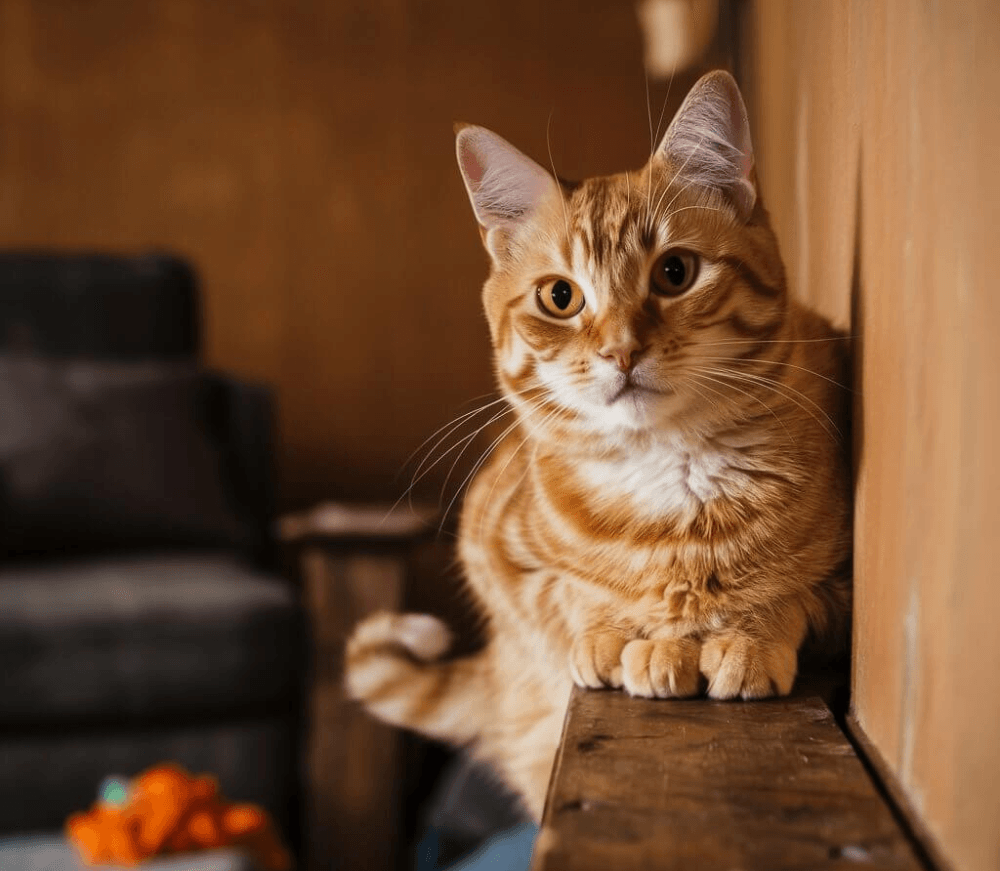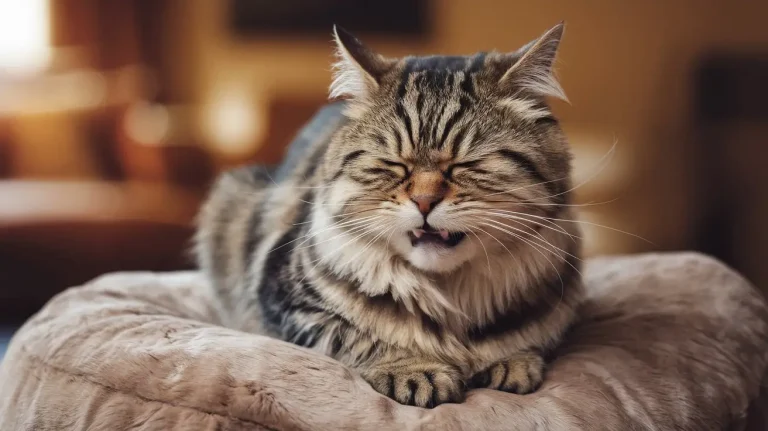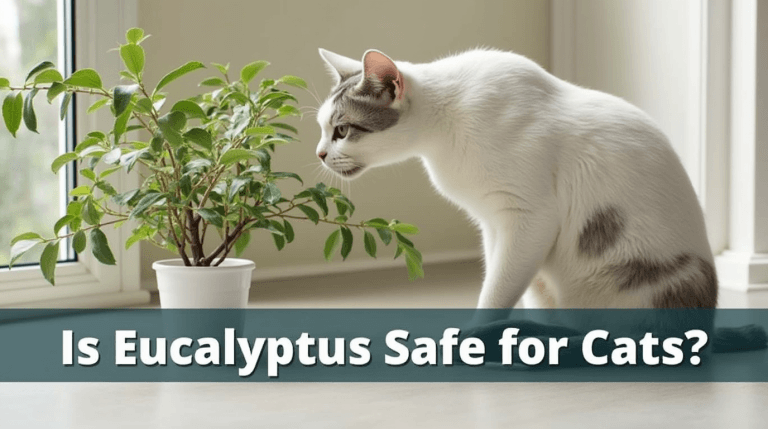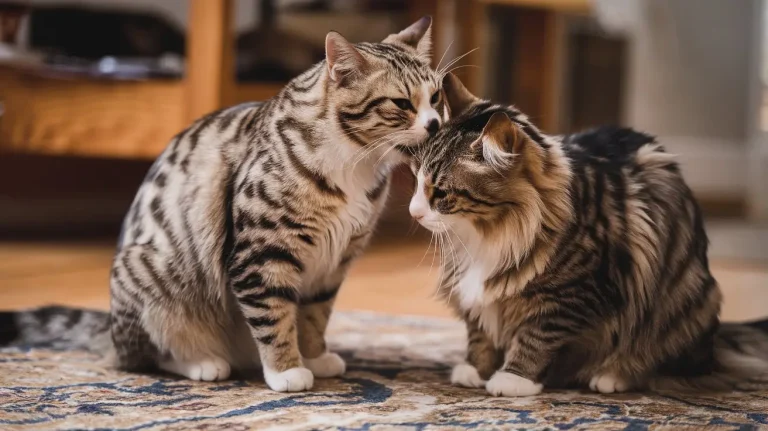The term ‘orange cat behavior‘ has sparked curiosity and debate among cat enthusiasts, stemming from the notion that orange or tabby cats possess unique characteristics compared to their feline counterparts.
This belief, bolstered by popular media and meme culture, paints orange cats as friendly, affectionate, and occasionally clumsy, traits epitomized by the famous cartoon cat, Garfield.
Such stereotypes have led many to ponder: are these behaviors fact or fiction, influenced by coat color, or merely anecdotal observations embraced by society?
This article delves into the myths and realities surrounding orange cat behavior, exploring whether there’s scientific evidence linking coat color to personality and how breed and genetics might play a significant role.
Additionally, it aims to differentiate between human perceptions and the actual nuances of feline behavior, ultimately shedding light on what truly influences a cat’s disposition.
Through a blend of scientific insights and observations, we’ll uncover the truth behind the behavior of orange or tabby cats, navigating the intricate interplay of genetics, breed, and environment.
Table of Contents
Exploring the Myth of Orange Cat Behavior
Delving into the myth of “orange cat behavior,” it becomes evident that the connection between coat color and personality traits in cats is more folklore than fact. Daniel Warren-Cummings of Cats Protection emphasizes the lack of significant evidence linking behavior to coat color.
This is further supported by a 2015 study revealing that human perceptions, rather than objective observations, often guide our views on cat personalities. Interestingly, orange cats were perceived as friendlier and less aloof than their counterparts, highlighting how subjective opinions shape our understanding of feline behavior.
- Perception vs. Reality of cat orange behavior:
- Human Perceptions: Orange cats viewed as friendlier based on a 2015 study.
- Scientific Evidence: No conclusive evidence linking coat color to behavior.
The concept of “orange cat behavior” lacks a scientific foundation, making it a product of human pattern-seeking rather than a reflection of inherent feline traits.
Studies by Mónica Teresa González-Ramírez and others suggest that while cat owners may perceive orange cats as more trainable and friendly, these characteristics are not dictated by fur color.
This discrepancy between perception and science serves as a reminder of the influence of human biases on our understanding of animal behavior.
- Owner Perceptions vs. Scientific Findings of cat orange behavior:
- Owner Beliefs: Orange cats perceived as trainable, friendly, and calm.
- Research Outcomes: Behaviors not influenced by coat color, challenging the stereotype of “orange cat behavior.”
The exploration of this myth not only reveals the gap between perception and reality but also emphasizes the need for a more nuanced understanding of what shapes a cat’s personality.
Factors such as breed, genetics, and environment play a far more significant role than the color of a cat’s coat, urging cat enthusiasts to look beyond surface-level attributes when considering the complex nature of feline behavior.
Scientific Insights on Coat Color and Personality
Diving into the genetic makeup of orange cats, it’s fascinating to see how the X chromosome plays a pivotal role. The presence of the orange gene on this chromosome is what’s responsible for their vibrant coat, as it prompts the production of phaeomelanin.
This pigment is the artist behind the canvas, painting their fur with the signature orange hue.
- Genetic Blueprint:
- Sex-Linked Gene: The orange gene’s location on the X chromosome means it’s sex-linked. Males only need one copy from their mother to be orange, whereas females require two copies, one from each parent.
- Color Expressions: Cats with two X chromosomes can exhibit a range of color expressions, depending on the gene’s presence in one or both chromosomes.
Interestingly, all orange cats wear the tabby pattern, though not all tabbies boast orange coats. This is due to the orange gene overshadowing the solid gene, ensuring every orange cat is a tabby at heart. Despite the intriguing genetic dance, studies, including those by Dr. Mikel Delgado and the University of California Davis, consistently show no behavioral differences linked to coat color.
This aligns with the broader finding that coat color does not dictate a cat’s personality, debunking myths of orange cats having distinct behaviors.
Instead, how humans perceive and interact with cats based on their coat color might influence their perceived personality, underscoring the impact of human perception on feline behavior.
The Influence of Breed on Cat Behavior
While breed and coat color are often thought to influence cat behavior, studies suggest that early socialization plays a more critical role in shaping their personalities. However, certain breeds do exhibit distinctive traits, making breed an aspect worth considering when understanding cat behavior.
- Breed-Specific Behaviors:
- Siamese: Vocal and social
- Bengals: Active and playful
- Ragdolls: Shy towards strangers, potential aggression towards humans
- Turkish Vans: Aggression towards humans and other cats
Research indicates that while orange cats, or ‘ginger cats’, are not a specific breed but rather identified by their coat color, some color patterns, such as those of tortoiseshell/calico cats, have been associated with increased aggression towards humans.
Moreover, a comprehensive study involving 5726 cats across 40 breeds revealed behavioral differences in 19 breeds, suggesting a genetic basis for certain behaviors.
- Genetic Influence on Behavior:
- Activity level differences among breeds, with Turkish Van and Angora cats forming a distinct cluster
- Heritability of traits like sociability and aggression, indicating genetic influence
- Physical appearance and behavior traits correlation, hinting at a genetic link between the two
These findings underscore the complexity of feline behavior, highlighting the influence of genetics and breed, alongside the crucial role of early socialization.
Human Perception vs. Feline Reality
The interplay between human perception and feline reality is a complex one, often leading to misconceptions about cat behavior based on coat color, including the beloved orange cats. Studies and observations reveal:
- Perception vs. Reality:
- Human Perception: Cats of different colors, such as white cats with black spots and tortoiseshell cats, are often attributed with distinct personalities by their owners.
- Feline Reality: The perceived personality traits are more likely influenced by environmental factors or feline instincts rather than genetics.
This discrepancy highlights the importance of understanding cats beyond superficial characteristics to prevent negative stereotypes and ensure successful adoptions. For instance, a study critiquing the assessment of cats as psychopaths based on human-rated questionnaires underscores the flaw in measuring cat behavior through a human lens.
It points out behaviors perceived negatively, like furniture scratching, are natural instincts for cats, not indicators of malice.
- Understanding Cat Behavior:
- Natural Instincts: Cats exhibit behaviors driven by instincts, which can be misunderstood by humans. For example, a whooshing tail might express annoyance, while exposing their belly indicates trust.
- Human-Cat Communication: Cats communicate with their humans through vocalizations, body language, and physical contact, relying on scent and visual cues to recognize and form bonds with their caregivers.
- Misconceptions: Stereotypes about cats being aloof or uncaring often stem from a lack of understanding of their communication methods. Observing a cat’s body language and responses to interactions, such as through a “consent test,” can provide insights into their feelings and preferences.
By bridging the gap between perception and reality, cat enthusiasts can foster deeper connections with their feline friends, appreciating the complexity of their behaviors and the unique ways they express affection and trust.
The Role of Genetics: Understanding Orange Cats Behavior
In the fascinating world of feline genetics, the vibrant coat of an orange cat is not just a matter of aesthetics but a window into the intricate genetic makeup that influences not only their appearance but also their health and behavior.
The genetic quirk responsible for the distinctive orange hue is linked to the X chromosome, creating a predominance of male orange cats in the population. Here’s a closer look at the genetics behind orange cats:
- Gender and Genetics:
- Approximately 80% of orange cats are male due to the sex-linked gene on the X chromosome.
- For a female to exhibit the orange coat, she must inherit two copies of the gene, one from each parent, making female orange cats rarer (around three males for every one female).
- Health and Behavior Insights:
- Orange cats are predisposed to certain health issues like obesity and skin problems.
- The pigment responsible for their coat color, pheomelanin, is also found in human red hair, suggesting a shared genetic trait.
- Interestingly, dark freckles around the gums or nose, a condition known as lentigo, are common in orange tabbies due to genetic factors.
- Personality Traits:
- Studies suggest a potential link between coat color and personality, attributed to melanin’s influence on brain activity. Orange cats tend to display sociable and affectionate behaviors more frequently than their counterparts.
- The presence of higher pigment levels might make these cats more tolerant of crowded environments, potentially making them well-suited for city living.
This genetic exploration reveals that the allure of orange cats extends beyond their striking appearance, delving into the realms of health, behavior, and adaptability, shaped by their unique genetic blueprint.
Beyond the Coat: What Really Determines a Cat’s Personality
The exploration of orange cat behavior reveals a fascinating dichotomy between popular perceptions and scientific evidence. While folklore and anecdotes have painted orange cats as inherently friendlier and more sociable, our investigation indicates these personality traits are not dictated by coat color but are a result of a complex interplay of genetics, breed, and environmental factors.
This underscores the need to approach feline behavior with a nuanced perspective, recognizing that the essence of a cat’s personality extends beyond superficial attributes like coat color.
Understanding the behavior and characteristics of orange cats, or any cat for that matter, requires looking past myths and exploring the scientific insights available. As cat enthusiasts and owners foster deeper connections with their feline friends, acknowledging the role of early socialization, breed-specific traits, and the environment will be crucial.
This approach not only enriches the human-cat relationship but also paves the way for further research and appreciation of the diversity and complexity inherent in our beloved feline companions.
Conclusion
In light of the deep dive into orange cat behavior and the myths and facts surrounding their personalities, it’s fitting to acknowledge a special day dedicated entirely to these vibrant felines. September 1st marks Ginger Cat Appreciation Day, a celebration that brings orange cats into the limelight, encouraging appreciation and awareness of their unique presence in the feline world.
This day serves as a reminder of the joy and companionship that orange cats bring to their human counterparts.
- Celebrating Ginger Cat Appreciation Day:
- Recognition: Acknowledges the special place orange cats hold in the hearts of cat lovers.
- Activities: Encourages owners to share stories, photos, and participate in events highlighting the charm of orange cats.
- Awareness: Raises awareness about the care, health, and adoption of orange cats, fostering a deeper understanding and connection.
Ginger Cat Appreciation Day is not just a day for celebration but also an opportunity for education and advocacy. It underscores the importance of looking beyond coat color to understand and appreciate the rich personalities and needs of all cats. Through shared stories and experiences, this day strengthens the bond between orange cats and their human families, while also promoting responsible pet ownership and adoption.
FAQs
What Are the Characteristics of Orange Cats’ Personalities?
Orange cats are often celebrated for their enjoyable and amiable personalities. While personalities can vary widely among any group of cats, and there will always be exceptions, many orange cats tend to be quite sociable and charming. However, it’s important to remember that each cat is unique, and personality traits can vary.
What Interesting Facts Exist About Orange Cats?
One fascinating aspect of ginger cats is their coat color variations, which can range from orange flame point markings to being entirely orange. The genetic basis for their distinctive orange coat lies on the X chromosome. For a female cat to display the orange coat, she must inherit two copies of this gene, whereas a male cat needs only one. Interestingly, there is an 80% likelihood that any orange cat you encounter will be male.
What Do People Typically Believe About Orange Cats?
Orange cats are often associated with vibrant life energy. They symbolize not only the life-giving energy of the sun, which sustains all life on Earth, but also the spiritual and physical energies that fuel our inner drive and enable us to achieve our goals. This rich symbolism makes orange cats special to many people.
Do Orange Cats Tend to Be Calm?
While orange cats have a reputation for being laid-back, and some may even seem a bit lazy, this is not a universal trait. The temperament of an orange cat can vary greatly, with some showing a lot of energy and curiosity. Factors such as age and lifestyle play a significant role in determining a cat’s activity level and behavior, making it a highly individual matter.





